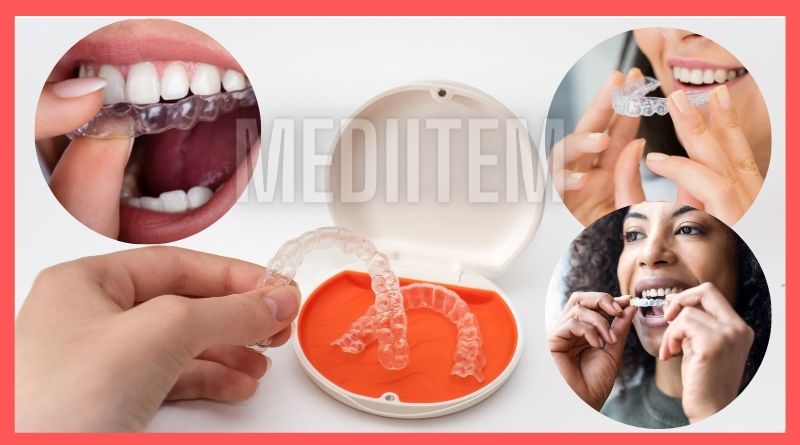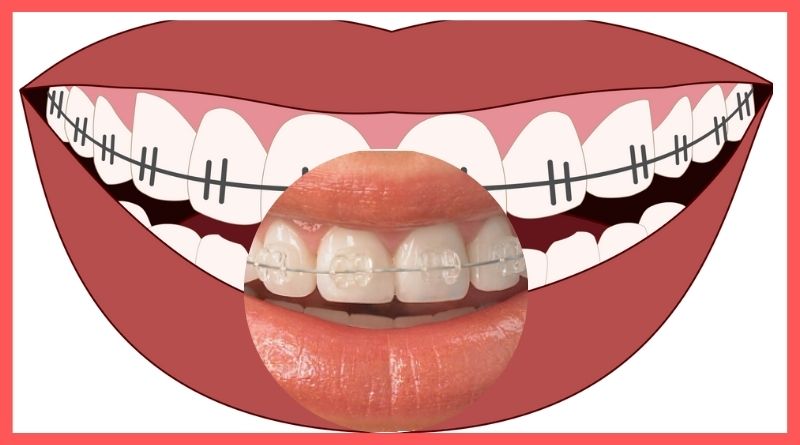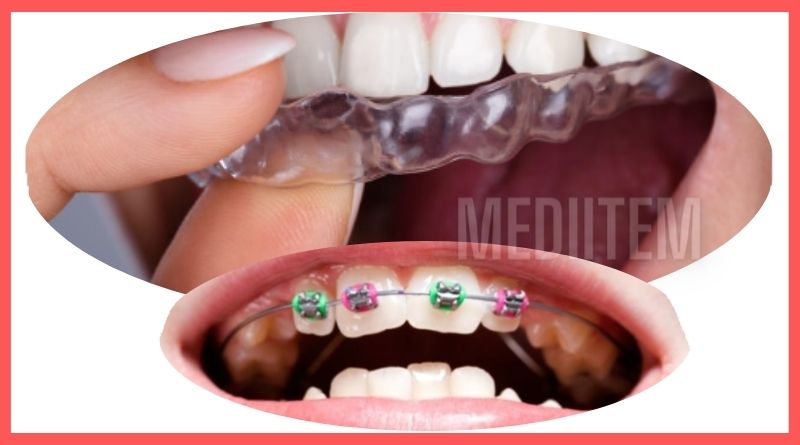Black spots on the teeth are the most noticeable and often cause alarm when seen, but in reality, they are normally the least serious. In most cases, black spots appear due to tobacco or coffee consumption. They are relatively easy to clean surface stains. A professional dental cleaning at your dental clinic can probably remove these black stains and return your teeth to their natural shade.
*There are various treatments to eliminate black spots and recover the aesthetics of your smile. Choosing the appropriate treatment will depend on the cause of the stains and the assessment of your general dentist or prosthodontist. Some options include:
If these stains are caught in time, we will only be talking about bacterial plaque, and therefore, the enamel will be perfect and only a dental cleaning or in some cases something more extreme, periodontal treatment will be necessary.
If the plaque only adheres to the visible part of the tooth, it can be removed with regular dental cleaning.
If, on the other hand, the plaque is already below the gum, and is attached to the root of the tooth, the only way to eliminate it will be to perform periodontal treatment.
In more serious cases, these black spots may have turned into cavities and therefore, the plaque has adhered to the tooth in such a way that it has created a hole that not only needs to be cleaned but also needs to be filled. making it necessary to perform a filling.
What are black spots on the teeth?
The black spots that sometimes appear on the teeth are due to the accumulation of bacterial plaque in areas where hygiene is not adequate or is more difficult. These are areas of the teeth where bacterial plaque adheres more easily and poor plaque removal causes it to persist over time and begin to accumulate and calcify. In this way, blackened areas begin to appear on the teeth, the treatment of which depends on the extent and depth they have reached.
What are black spots between teeth?
If this happens to you, you don’t need to fear as if it were something impossible to cure but don’t let yourself go either. The best thing you can do in any case is to go to your regular dentist.
Because, at first, you don’t give it importance, you should know that although dental tartar has an easy solution, it is not entirely beneficial for your oral health.
When you start to see the first black or brown spots on your teeth, go to a dentist.
Why do black spots occur on teeth?
The most common thing is that these stains appear due to problems related to the tooth enamel. On other occasions, they may be due to untreated dental tartar. A good oral cleaning every year can avoid many of these problems, among others.
The consumption of certain foods and drinks also makes it possible for black spots to appear between the teeth. Among the most common we find coffee. Because of its composition, the caffeine, and the sugar added to it, coffee is an inexhaustible source of problems for your teeth if you do not brush your teeth well and if you drink it in large quantities.
Other elements such as tea and red wine can cause us to find ourselves in this situation as well. Excessive tobacco consumption is something that we must also address, since it is another of the main reasons why these stains can appear on our teeth, in addition to significantly harming our health.
Black spot on teeth how to remove
Depending on the origin of the black spots on the teeth, this will be the treatment. In principle, the sooner they are detected, the easier their solution will be.
Dental cleaning:
As we have said, sometimes dental prophylaxis is simply necessary to remove stains or tartar attached to the visible part of the tooth.
However, if the bacterial plaque has advanced to the root of the tooth, periodontal treatment will be required.
The idea is to do a dental cleaning at least once a year to keep tartar at bay and thoroughly clean hard-to-reach areas.
Fillings:
If the bacterial plaque has done its thing and decayed the piece, the solution involves thoroughly cleaning the tooth, eliminating the infected area, and restoring and sealing the area.
Veneers:
When the cause of black spots on your teeth is not tartar or cavities, and the discoloration does not disappear, veneers are an interesting option to consider.
Dental veneers are thin sheets of porcelain or composite that adhere to the external surface of the tooth, returning aesthetic harmony to the mouth both in shape and color.
They are very easy to put on and are characterized by their durability and natural appearance.
Teeth whitening
Teeth whitening is a minimally invasive aesthetic treatment that eliminates both intrinsic (whether due to genetics, medications, or age…) and extrinsic (wine, coffee, tobacco, etc.) dental stains, lightening various shades of enamel.
To carry out the whitening technique, hydrogen peroxide is used, a gel that is applied to the enamel and activated with a cold light system.
The process is usually carried out by combining a couple of sessions at the dental clinic with subsequent teeth whitening from home.
How to prevent black spot on teeth
The best way to avoid black spots on your teeth is with prevention.
*Periodic check-ups are key to detecting the slightest discoloration of the teeth and being diagnosed before the problems become greater.
*Although it may seem clinic, maintaining correct oral hygiene is vital so that stains do not appear or damage is minimized. In this sense, good tooth brushing and flossing will be your allies.
*Do not smoke. It has been proven that smoking wreaks havoc on the mouth.
*Avoid eating foods rich in sugar, drinks, or foods that are acidic or have a high level of pigmentation.
What are the causes of black spots on teeth?
Different factors influence the appearance of stains on the enamel, which are not always black and can cover a range of different shades. Below, we detail why they appear depending on their color:
1. Tobacco and coloring drinks
The habitual intake of beverages such as wine, coffee, or tobacco consumption causes staining of the teeth, especially if the recommended periodic dental hygiene is not performed.
Foods rich in sugars or acids also weaken the enamel and lead to the appearance of black spots on the teeth.
2. Abuse of rinses
Chlorhexidine is a common component in mouthwashes. Although its benefits are recognized, you must use it under medical supervision, since excessive use darkens the teeth and promotes the appearance of stains.
3. Iron supplements
Taking iron supplements to treat anemia, for example, can also cause spots to appear.
4. Worn or damaged enamel
Enamel is a resistant layer composed of hydroxyapatite (crystallized calcium phosphate) that protects our teeth. But despite its extraordinary hardness, it can be worn down by excessive consumption of foods with high sugar content, carbonated drinks, insufficient oral hygiene, dental malocclusion, eating disorders, or bruxism. When the enamel is damaged, dark spots can appear.
5. Cavities
Cavities are precisely one of the things responsible for causing enamel deterioration. Sometimes this manifests itself with black spots on the teeth, especially at the border with the gums.
Its early detection is vital to prevent it from advancing, damaging the dentin and irremediably reaching the nerve.
6. Tartar buildup
When bacterial plaque accumulates and hardens, it becomes tartar or dental calculus. Sometimes, this accumulation is evident with the appearance of black spots.
It must be taken into account that even if correct oral hygiene is maintained, tartar is very difficult to remove completely, which is why it is necessary to perform a tartarectomy or dental cleaning periodically.
If tartar is not removed, cavities, gum problems or other periodontal diseases will appear.
Dental calculus that grows under the gum acquires that blackish color because it absorbs pigments from the blood and fluids that circulate between the tooth and the gingiva.
7. Microabrasion:
This procedure involves the use of an abrasive paste to remove surface stains from tooth enamel.
8. Professional Dental Cleaning:
A professional dental cleaning can remove plaque and tartar built up on your teeth, helping to prevent and treat black spots.
What should we do with stains on teeth?
Good hygiene at home and professional treatment will be the keys to permanently removing stains:
Effective oral hygiene:
The most important factor in preventing stains is good oral hygiene. It is recommended to brush your teeth a minimum of twice a day. Also use the oral irrigator, mouthwash, and dental floss.
Visit the dentist regularly:
Many pathologies are not visible to the naked eye to patients. Furthermore, it is advisable to refer all doubts to your dentist.
We will carry out a personalized study to adapt the treatment to your needs so you can smile again without complexes.
Professional treatments to remove stains:
A professional dental cleaning can prevent stains from appearing. Another option is to undergo teeth whitening, which lightens your smile several shades. We perform teeth whitening with LED light, so it is minimally invasive for your smile.
Whitening products:
Although they are not a miracle treatment, they can serve as a maintenance technique.
There is a wide variety of toothpaste on the market to whiten teeth. Before using them, consult your dentist, since some can be very abrasive for your teeth.
Proper nutrition:
Coffee is very appealing in the morning, but it can cause stains to appear.
It is recommended to limit the consumption of foods that promote its formation. Red wine, black tea, and beets can easily stain your teeth.
Conclusion
As you can see, black spots on the teeth are not just an aesthetic issue. They are also indicative of undesirable habits or underlying oral problems.
Prevention is the best way to avoid it, but since it is not always possible, go to a specialist as soon as you detect the appearance of dark spots on your teeth.
Please subscribe to my channel and follow
YouTube


